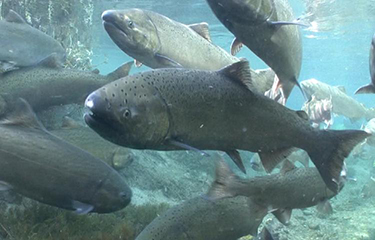A lawsuit filed against the National Marine Fisheries Service in 2020 reared its head in a U.S. district court in Washington state on 8 August, 2022, and it could spell changes in fisheries management for Southeast Alaska trollers.
The case stems from a suit brought by the Wild Fish Conservancy that challenges the biological rationale in setting allocations of Pacific Salmon Treaty chinooks that local trollers catch.
The premise of the case is that NMFS, in its biological opinion, did not consider a portion of the commingling stocks as forage fish for a pod of 74 killer whales in Puget Sound, rendering the agency out of compliance with the Endangered Species Act (ESA).
Like other legal battles between the fishing industry and environmental groups, this case stems from differing interpretations of the data.
The Wild Fish Conservancy contends that 97 percent of the troll-caught chinooks originate in drainages outside of Alaska. The Alaska Department of Fish and Game, meanwhile, estimates those numbers between 30 and 80 percent, and that the percentages vary each year.
Though some feared that a subsequent injunction filed by the conservancy could stop the fishery after the initial case was filed in 2020, that didn’t happen.
“Just after the WFC initially filed over two years ago, they followed that up with an injunction which was thrown out a few months later by the same court (the 9th Circuit),” Alaska Trollers Association Executive Director Amy Daughert said in an email. “So we continue to fish with this uncertainty held over our heads until it is addressed administratively through the agency or judicially, via an appeal.”
The district court judge’s ruling in favor of the conservancy calls for more analysis of the fishery and its possible impacts on Alaska-caught chinooks as a primary foodsource for killer whales. Whether the analysis refers to tightening language within the management plan to bring it into compliance with the ESA, or mandates changes in the management of the fishery itself, remains to be seen – and the battle will likely simmer in the courts.
“We remain hopeful the outcome will impact us minimally,” Daugherty said. “As it should, since it's clear in the data that curtailing the troll fishery further will not improve the rampant toxicity and crowding in the Seattle area waters, where these ESA killer whales reside.”
At the end of August, trollers still had 24,000 treaty chinooks remaining in the Guideline Harvest Level of 193,150 for the winter, spring, and summer trolling seasons. The summer troll season began on 1 July and officially ended on 20 September, 2022.
Part of this year’s dynamic is that terminal hatchery runs of chum salmon near Sitka have lured trollers from federally-managed, outside waters to the nearshore areas near the hatcheries, according to Grant Hagerman, a troll fishery biologist with the ADF&G in Sitka, Alaska.
“They’ve been targeting chums since the end of July,” he says. “It’s a record year for sure; There are over 930,000 chums, and there are almost 260 vessels participating.”
At the going rate of more than USD 1.00 (EUR 0.98) per pound, Hagerman estimated preliminary revenues for the troll fleet have climbed past USD 8.2 million (EUR 8.2 million). The estimated value of the summer troll chinook fishery, meanwhile, stands at around USD 7.4 million (EUR 7.4 million) so far this year.
“The value of the hatchery chum fishery has exceeded the value of the chinook fishery,” he said. “That’s unprecedented.”
ADF&G’s predictions last spring called for a harvest of around 8.4 million chums, 789,000 sockeyes, 241,000 chinooks, 1.8 million cohos, and 16.5 million pinks. According to the ADF&G Blue Sheet published on 28 August, the fleet of seiners, gillnetters, and trollers had landed 6.7 million chums, a little over one million sockeyes, 225,000 chinooks, 665,000 cohos and 10.5 million pinks.
On 30 August Hagerman reported that most of the seine fishing for pinks had come to an end, but cohos would be coming to the nearshore waters where gillnet catches would pick up through mid-September.
“It’s been super good on the sockeye fishing,” said Luke Williams, a gillnetter from Haines. “I’ve talked to some of the guys, and they said it’s been one of the best fishing seasons they’ve ever had.”
Williams said the ex-vessel price of USD 2.15 (EUR 2.11) per pound for sockeyes caught in nearby Lynn Canal has done its share to make it a banner season.
“I think with the price this high it has made a big difference too,” he said.
Reporting by Charlie Ess
Photo courtesy of NOAA







